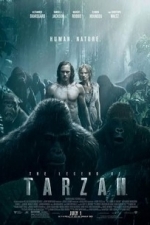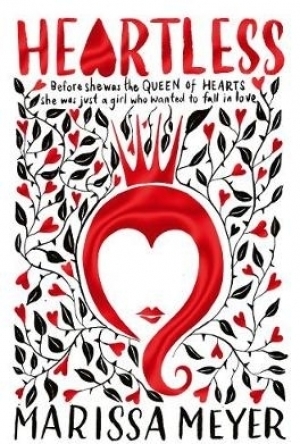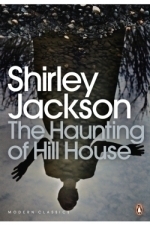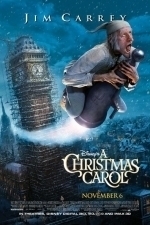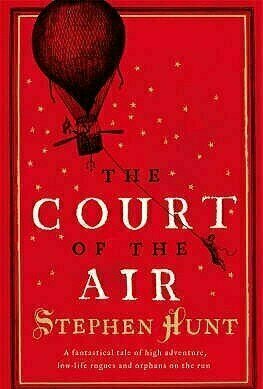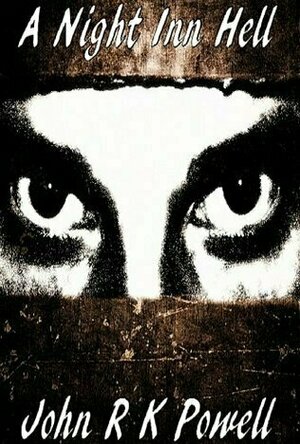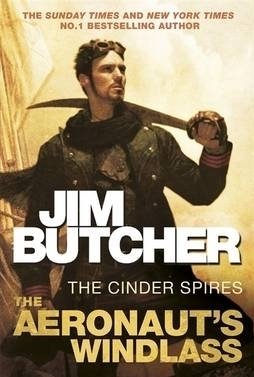Search
Search results
Movie Metropolis (309 KP) rated The Legend of Tarzan (2016) in Movies
Jun 11, 2019
CPR Needed
As tends to be the case with Hollywood, studios pay very close attention to their rivals release schedules, eyeing up potential competition to pit their films against, maxing box-office returns in the process.
And when Disney announced they were rebooting The Jungle Book in March this year, Warner Bros quickly responded with another jungle-themed film; The Legend of Tarzan. But does this interpretation on the classic character swing or fall?
It’s been nearly a decade since Tarzan (Alexander Skarsgård), aka John Clayton III, left Africa to live in Victorian England with his wife Jane (Margot Robbie). Danger lurks on the horizon as Leon Rom (Christoph Waltz), a treacherous envoy for King Leopold, devises a scheme that lures the couple and friend George Williams (Samuel L Jackson) to the Congo. Rom plans to capture Tarzan and deliver him to an old enemy in exchange for diamonds. When Jane becomes a pawn in his devious plot, Tarzan must return to the jungle to save the woman he loves.
Directed by David Yates (Harry Potter & the Deathly Hallows), Legend of Tarzan features committed performances from its lead cast, immersive scenery and impressive special effects, but all of the glitz can’t save a film that plods along at a dreadful pace. Not since Peter Jackson’s King Kong has there been a movie that wastes so much of its opening act.
Alexander Skarsgård is likeable and commanding as the titular character, but lacks enough acting prowess to tackle the deeper, more emotional side that writers Adam Cozad and Craig Brewer have brought to the table here. Therefore, the scenes featuring a solo Tarzan suffer somewhat and Samuel L Jackson feels wasted in a poorly written and half-hearted role.
It is in Margot Robbie and Christoph Waltz that we find the film’s saving graces. Their characters leap off the screen with Waltz in particular being a highlight throughout. It’s unfortunate that one of our greatest living actors is lambasted with poor dialogue however, though the script just about keeps him afloat.
David Yates brings a similar filming style here to that of his foray into Harry Potter. The action is confidently filmed, but he avoids the use of shaky-cam that many directors seem to find appealing nowadays. The CGI is on the whole very good, especially in the finale which is breath-taking to watch.
It’s just a shame the rest of the film is such a drag. The first hour is incredibly poorly paced with very brief, albeit well-filmed, action sequences not doing enough to brighten Legend of Tarzan up. Elsewhere, the use of flashbacks is at first a decent way of giving the audience some exposition, but after the tenth one, they’re a nuisance.
Overall, The Legend of Tarzan does a lot more with its iconic character than other films have done, but that doesn’t excuse its poor pacing. Thankfully, the exciting finale lifts the final act above the standard of the first hour, and commanding performances from all the cast sustain interest just about enough to see it through to the end.
https://moviemetropolis.net/2016/07/07/cpr-needed-the-legend-of-tarzan-review/
And when Disney announced they were rebooting The Jungle Book in March this year, Warner Bros quickly responded with another jungle-themed film; The Legend of Tarzan. But does this interpretation on the classic character swing or fall?
It’s been nearly a decade since Tarzan (Alexander Skarsgård), aka John Clayton III, left Africa to live in Victorian England with his wife Jane (Margot Robbie). Danger lurks on the horizon as Leon Rom (Christoph Waltz), a treacherous envoy for King Leopold, devises a scheme that lures the couple and friend George Williams (Samuel L Jackson) to the Congo. Rom plans to capture Tarzan and deliver him to an old enemy in exchange for diamonds. When Jane becomes a pawn in his devious plot, Tarzan must return to the jungle to save the woman he loves.
Directed by David Yates (Harry Potter & the Deathly Hallows), Legend of Tarzan features committed performances from its lead cast, immersive scenery and impressive special effects, but all of the glitz can’t save a film that plods along at a dreadful pace. Not since Peter Jackson’s King Kong has there been a movie that wastes so much of its opening act.
Alexander Skarsgård is likeable and commanding as the titular character, but lacks enough acting prowess to tackle the deeper, more emotional side that writers Adam Cozad and Craig Brewer have brought to the table here. Therefore, the scenes featuring a solo Tarzan suffer somewhat and Samuel L Jackson feels wasted in a poorly written and half-hearted role.
It is in Margot Robbie and Christoph Waltz that we find the film’s saving graces. Their characters leap off the screen with Waltz in particular being a highlight throughout. It’s unfortunate that one of our greatest living actors is lambasted with poor dialogue however, though the script just about keeps him afloat.
David Yates brings a similar filming style here to that of his foray into Harry Potter. The action is confidently filmed, but he avoids the use of shaky-cam that many directors seem to find appealing nowadays. The CGI is on the whole very good, especially in the finale which is breath-taking to watch.
It’s just a shame the rest of the film is such a drag. The first hour is incredibly poorly paced with very brief, albeit well-filmed, action sequences not doing enough to brighten Legend of Tarzan up. Elsewhere, the use of flashbacks is at first a decent way of giving the audience some exposition, but after the tenth one, they’re a nuisance.
Overall, The Legend of Tarzan does a lot more with its iconic character than other films have done, but that doesn’t excuse its poor pacing. Thankfully, the exciting finale lifts the final act above the standard of the first hour, and commanding performances from all the cast sustain interest just about enough to see it through to the end.
https://moviemetropolis.net/2016/07/07/cpr-needed-the-legend-of-tarzan-review/
<i>This eBook was provided by the publisher via NetGalley in exchange for an honest review
Before she was the Queen of Hearts she was just a girl who wanted to fall in love. </i>When Marissa Meyer finished writing <i>The Lunar Chronicles</i>, a series of books loosely based on fairytales, everyone wondered what she would do next. Continuing along the lines of using famous stories, Meyer has devoted an entire novel to Lewis Carroll’s <i>Alice’s Adventures in Wonderland</i>. With thousands of references to the original tale, and a couple of other works too, Heartless is perfect for fans of Carroll’s salient characters.
Unlike most retellings, Meyer has focused on events prior to Alice’s accidental discovery of Wonderland. The resulting novel is essentially a theory as to how the characters turned out the way they did in the original story published in 1865. Drawing attention to the predestined Queen of Hearts, a young woman named Catherine, readers discover a reason for her development into an infamous villain.
Lady Catherine Pinkerton is completely unlike the character she is fated to be. She is a kind, thoughtful girl whose greatest wish is to open her own bakery. Unfortunately, this dream is just that, a dream. With the asinine King of Hearts resolved to marry her, there is little Cath can do to avoid her royal future. At first it may appear odd that Cath is so against marrying the ruler of Hearts, but she soon makes it clear she would much rather marry for love. So, when the court joker, Jest – a similar character to the legendary Hatter – catches her eye, Catherine becomes determined to control her own future.
<i>Heartless</i> is a humorous, yet romantic, young adult novel, full of both well-known and new characters. Set in a world with morals similar to the Victorian era, it works extremely well as a prequel to <i>Alice’s Adventures in Wonderland</i>. Catherine is an admirable, feministic character who readers will struggle to believe will become such a notorious Queen. What could possibly happen to vastly alter her personality? Similarly, what is it that makes the Hatter go mad, and who is Jest? Being a character unique to this novel, there is a foreboding sense that this joker, and his poetry reciting raven – cue Edgar Allan Poe references – suffer a horrible demise.
Unlike Marissa Meyer’s previous books where the fairytales were not so obvious, the storyline in <i>Heartless</i> perfectly joins up with Lewis Carroll’s imagination. With references to mock turtles, the Jabberwock and other minor characters, there is so much to discover in Meyer’s interpretation of Wonderland – it even clears up a couple of scenarios from the original tale that may have bamboozled readers initially.
Admittedly, <i>Heartless</i> takes a little while to get going, but once it has, it is difficult to put down. Fans of Marissa Meyer may be disappointed that she did not stick to her futuristic storytelling, however all Alice enthusiasts will fall in love with this book – and probably with Jest as well. Overall, <i>Heartless</i> is a delightful book that reignites our inner childish imagination.
Before she was the Queen of Hearts she was just a girl who wanted to fall in love. </i>When Marissa Meyer finished writing <i>The Lunar Chronicles</i>, a series of books loosely based on fairytales, everyone wondered what she would do next. Continuing along the lines of using famous stories, Meyer has devoted an entire novel to Lewis Carroll’s <i>Alice’s Adventures in Wonderland</i>. With thousands of references to the original tale, and a couple of other works too, Heartless is perfect for fans of Carroll’s salient characters.
Unlike most retellings, Meyer has focused on events prior to Alice’s accidental discovery of Wonderland. The resulting novel is essentially a theory as to how the characters turned out the way they did in the original story published in 1865. Drawing attention to the predestined Queen of Hearts, a young woman named Catherine, readers discover a reason for her development into an infamous villain.
Lady Catherine Pinkerton is completely unlike the character she is fated to be. She is a kind, thoughtful girl whose greatest wish is to open her own bakery. Unfortunately, this dream is just that, a dream. With the asinine King of Hearts resolved to marry her, there is little Cath can do to avoid her royal future. At first it may appear odd that Cath is so against marrying the ruler of Hearts, but she soon makes it clear she would much rather marry for love. So, when the court joker, Jest – a similar character to the legendary Hatter – catches her eye, Catherine becomes determined to control her own future.
<i>Heartless</i> is a humorous, yet romantic, young adult novel, full of both well-known and new characters. Set in a world with morals similar to the Victorian era, it works extremely well as a prequel to <i>Alice’s Adventures in Wonderland</i>. Catherine is an admirable, feministic character who readers will struggle to believe will become such a notorious Queen. What could possibly happen to vastly alter her personality? Similarly, what is it that makes the Hatter go mad, and who is Jest? Being a character unique to this novel, there is a foreboding sense that this joker, and his poetry reciting raven – cue Edgar Allan Poe references – suffer a horrible demise.
Unlike Marissa Meyer’s previous books where the fairytales were not so obvious, the storyline in <i>Heartless</i> perfectly joins up with Lewis Carroll’s imagination. With references to mock turtles, the Jabberwock and other minor characters, there is so much to discover in Meyer’s interpretation of Wonderland – it even clears up a couple of scenarios from the original tale that may have bamboozled readers initially.
Admittedly, <i>Heartless</i> takes a little while to get going, but once it has, it is difficult to put down. Fans of Marissa Meyer may be disappointed that she did not stick to her futuristic storytelling, however all Alice enthusiasts will fall in love with this book – and probably with Jest as well. Overall, <i>Heartless</i> is a delightful book that reignites our inner childish imagination.
EmersonRose (320 KP) rated The Haunting of Hill House in Books
Nov 20, 2019
The Haunting of Hill House was written by Shirley Jackson in 1959. Since then it has been heralded as a milestone in the horror genre. The book takes its reader on an unnerving adventure with four characters who chose to spend a summer in a haunted house.
Dr. Montague wishes to track the supernatural and write a factual paper on hauntings. He enlists the help of two women who he believes to have connections with the unnatural. The first is Theodora lighthearted and the center of attention, and Eleanor, quiet and fragile but ready for something in her life to change. Their party is completed by Luke, the charming heir to Hill House. The unnerving atmosphere of the house puts them all on edge from the moment they see it, but things only get stranger as the power of the house grows.
I was drawn to this book for several reasons. First, it was the week of Halloween, why not get into the spirit. But Hill House had begun to orbit in my life before this. I myself read The Lottery in my eighth-grade creative writing class. I also recently read a book called House of Leaves by Mark Z. Danielewski, which is also a haunted house story and Shirley Jackson’s book began getting recommended to me. As I started to read the book, I began to have this feeling best expressed through a quote from the book itself: “Am I walking toward something I should be running away from?”
When I started reading the story, I could not help but let my thoughts fly trying to solve 13388the mystery myself. The language of the book captured my attention completely. The descriptions built up the house so vividly in my imagination. The haunting Victorian atmosphere is both beautiful and disturbing. The unnerving and uncomfortable were created, kept up, and made the book hard to put down. I loved wondering about Mrs. Dudley, questioning the other characters, and imagining what could be knocking on the door.
Eleanor, as the point of view character, is the easiest to identify with. Her paranoia, fear, and anxiety are central parts to her identity, but she also seems to the most real in her reactions to both the house and the other characters. He relationships with each of the other four are almost dreamlike in the way level of closeness she has with them ebbs and flows. I could not help but feel for Eleanor, especially when it seems she is being targeted by the house.
I found this book to be enthralling. The horror genre is not my go-to read, but Shirley Jackson has a way with words and intimate feelings that makes me want to read through every book she has ever written. The psychological descent of the characters is natural and terrifying to behold. Now that I have read it, I cannot help but see Jackson’s influence on horror and psychological thriller. I am very pleased with having finally read this book and would highly recommend it as a must read. Only beware, the house as power and no one’s mind is safe.
Dr. Montague wishes to track the supernatural and write a factual paper on hauntings. He enlists the help of two women who he believes to have connections with the unnatural. The first is Theodora lighthearted and the center of attention, and Eleanor, quiet and fragile but ready for something in her life to change. Their party is completed by Luke, the charming heir to Hill House. The unnerving atmosphere of the house puts them all on edge from the moment they see it, but things only get stranger as the power of the house grows.
I was drawn to this book for several reasons. First, it was the week of Halloween, why not get into the spirit. But Hill House had begun to orbit in my life before this. I myself read The Lottery in my eighth-grade creative writing class. I also recently read a book called House of Leaves by Mark Z. Danielewski, which is also a haunted house story and Shirley Jackson’s book began getting recommended to me. As I started to read the book, I began to have this feeling best expressed through a quote from the book itself: “Am I walking toward something I should be running away from?”
When I started reading the story, I could not help but let my thoughts fly trying to solve 13388the mystery myself. The language of the book captured my attention completely. The descriptions built up the house so vividly in my imagination. The haunting Victorian atmosphere is both beautiful and disturbing. The unnerving and uncomfortable were created, kept up, and made the book hard to put down. I loved wondering about Mrs. Dudley, questioning the other characters, and imagining what could be knocking on the door.
Eleanor, as the point of view character, is the easiest to identify with. Her paranoia, fear, and anxiety are central parts to her identity, but she also seems to the most real in her reactions to both the house and the other characters. He relationships with each of the other four are almost dreamlike in the way level of closeness she has with them ebbs and flows. I could not help but feel for Eleanor, especially when it seems she is being targeted by the house.
I found this book to be enthralling. The horror genre is not my go-to read, but Shirley Jackson has a way with words and intimate feelings that makes me want to read through every book she has ever written. The psychological descent of the characters is natural and terrifying to behold. Now that I have read it, I cannot help but see Jackson’s influence on horror and psychological thriller. I am very pleased with having finally read this book and would highly recommend it as a must read. Only beware, the house as power and no one’s mind is safe.
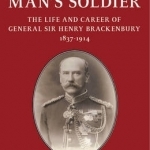
The Thinking Man's Soldier: The Life and Career of General Sir Henry Brackenbury 1837-1914
Book
Sir Henry Brackenbury is a now largely forgotten but extremely important soldier, writer, and...

Ghost Capture
Photo & Video and Entertainment
App
Ghosts Don't Exist Presents "Ghost Capture" ***NOW WITH 40 TOTAL GHOSTS!! DON'T FORGET TO SUBMIT...
Gareth von Kallenbach (980 KP) rated A Christmas Carol (2009) in Movies
Aug 9, 2019
The timeless classic A Christmas Carol by Charles Dickens has been one of the most beloved and adapted stories in history. There have been numerous movies, plays, radio, and television shows that have told the story for several generations as well as adapted films such as “Scrooged” and “Ghosts of Girlfriends Past” which were inspired by the timeless tale of redemption.
The latest version of the film was created by Director Robert Zemeckis (who also wrote the screenplay for the film.) and presents it with stunning 3D effects.
The clever use of animation based on motion capture of the actors brings a new and unique look and style to the film that makes it contemporary yet does not diminish the Victorian England setting of the story.
In case you are one of the few that are not familiar with the tale, the story centers on a miserly curmudgeon, named Ebenezer Scrooge (Jim Carrey), who is so tight with a penny that he keeps the coal in his office locked up, forcing his employee Bob Crachit (Gary Oldman), to make do with one tiny piece a day during the cold of winter.
Scrooge has no love for anyone or anything aside from his work, and he spends his life in working and dispensing venom for all those that dare come into his world.
When he is invited to Christmas dinner by his nephew Fred (Colin Firth), Scrooge declines the offer abruptly and berates his nephew about the pointless nature of Christmas and how it serves no purpose. As if he was just getting warmed up, Scrooge then unleashes his fury on a local charity and informs them that if the needy were to die, then perhaps there would be less surplus population in the world.
Alone in his home on Christmas Eve, Scrooge is visited by the ghost of his old associate Jacob Marley, (Gary Oldman), who passed away seven years earlier. Marley is bound by the long chains he created in his life, and warns Scrooge not to make the mistakes he did and that there is still time for him to find redemption.
Scrooge is visited by the ghosts of Christmas past, present, and future who take Scrooge on a journey through his life, and show him the folly of his ways, and offer him a second chance to lead a better life with caring and compassion to all.
The solid cast really shines and many play multiple roles in the film. Carrey gives a strong performance and manages to reign in his over the top energy during the more dramatic parts of the film, and lets it out where appropriate. He subtly infuses comedy into the story without it ever taking the focus from the story.
The 3D effects were a real treat and it truly seemed like it was snowing in the theater and the numerous shots of London were truly amazing. While some may see it as a more modern adaptation, I found the film to be very true to the story, and was not only very entertaining, but a version that even Scrooge himself would enjoy as this is a new holiday classic that sets the bar for future adaptations of the story to aspire to.
The latest version of the film was created by Director Robert Zemeckis (who also wrote the screenplay for the film.) and presents it with stunning 3D effects.
The clever use of animation based on motion capture of the actors brings a new and unique look and style to the film that makes it contemporary yet does not diminish the Victorian England setting of the story.
In case you are one of the few that are not familiar with the tale, the story centers on a miserly curmudgeon, named Ebenezer Scrooge (Jim Carrey), who is so tight with a penny that he keeps the coal in his office locked up, forcing his employee Bob Crachit (Gary Oldman), to make do with one tiny piece a day during the cold of winter.
Scrooge has no love for anyone or anything aside from his work, and he spends his life in working and dispensing venom for all those that dare come into his world.
When he is invited to Christmas dinner by his nephew Fred (Colin Firth), Scrooge declines the offer abruptly and berates his nephew about the pointless nature of Christmas and how it serves no purpose. As if he was just getting warmed up, Scrooge then unleashes his fury on a local charity and informs them that if the needy were to die, then perhaps there would be less surplus population in the world.
Alone in his home on Christmas Eve, Scrooge is visited by the ghost of his old associate Jacob Marley, (Gary Oldman), who passed away seven years earlier. Marley is bound by the long chains he created in his life, and warns Scrooge not to make the mistakes he did and that there is still time for him to find redemption.
Scrooge is visited by the ghosts of Christmas past, present, and future who take Scrooge on a journey through his life, and show him the folly of his ways, and offer him a second chance to lead a better life with caring and compassion to all.
The solid cast really shines and many play multiple roles in the film. Carrey gives a strong performance and manages to reign in his over the top energy during the more dramatic parts of the film, and lets it out where appropriate. He subtly infuses comedy into the story without it ever taking the focus from the story.
The 3D effects were a real treat and it truly seemed like it was snowing in the theater and the numerous shots of London were truly amazing. While some may see it as a more modern adaptation, I found the film to be very true to the story, and was not only very entertaining, but a version that even Scrooge himself would enjoy as this is a new holiday classic that sets the bar for future adaptations of the story to aspire to.
Phil Leader (619 KP) rated The Court of the Air (Jackelian, #1) in Books
Nov 11, 2019
The land of Jackals is under threat. Ancient foes are threatening its people and its borders. Who can save the land?
Molly Templar is an orphan scratching a living in a poor house. But someone wants her very badly - badly enough to kill anyone who gets in the way. But who would want a poor orphan girl and why?
Oliver Brooks is an outcast. He was lost for two years in the feymist when he was younger. He must have been changed but shows no signs, he appears to be completely normal. But he still needs to report to the authorities regularly and lives in virtual house arrest with his uncle. Until his uncle is killed and Oliver barely escapes.
So begins The Court Of The Air, a stupendous rolling epic set in the strange land of Jackals, a place which is sort of like Victorian England but is also completely different. There are guns and airships, bombs and politicians aplenty. There is also magic and gods stalk the shadows of the world. Sentient steam driven robots have their own country and their own religion.
This is one of those immersive novels. Nothing is explained as it is seen from the viewpoint of the main characters, and they don't need to explain their own world to themselves. This might deter some readers because although there are some familiar concepts many are new or reworked in subtly different ways so that assumptions are dangerous. Personally I enjoy being thrown into the deep end and having to work at understanding the world of the author. I was definitely in my element.
Hunt has an amazing imagination. He is like the curator of a museum of wonders, allowing quick glimpses at the shiny trinkets before twitching aside the curtain to the rather more sinister exhibits he keeps in the basement. He also has a prose style that is frequently poetic and full of brilliant metaphor and simile. One of my favourites was describing a camera as having its nose pointing sadly downwards. And the writing is dense, very dense. I took my time over this book because it was worth it to extract every nuance and vibe conveyed by the words on the page.
The plot is sprawling and convoluted. Oliver and Molly are the main characters but there are others on all sides of the conflict and very little is as it seems or black and white. The first half of the book concerns Molly and Oliver being separately pursued as various aspects of Jackals' geography and politics are revealed (and the political systems are a hoot). Once we find out what is going on the pursued then must try to confront and thwart the danger, not only to them but to their country and the world.
The threads finally come together in a cataclysmic ending. The plot does unravel a little as everything happens at once and there are plenty of clever twists. There is a certain about of deus ex machina in the ending but I would rather that than a tedious few pages of exposition. The good guys win. The bad guys are vanquished. And it's all very entertaining.
Now I do accept that it is a challenging read and some people will not take to it so I can't recommend it without saying, read an excerpt first. If you like reading it (even if you don't as yet understand what half of it means) then read all of it. You will not be disappointed.
Rated: Some violence
Molly Templar is an orphan scratching a living in a poor house. But someone wants her very badly - badly enough to kill anyone who gets in the way. But who would want a poor orphan girl and why?
Oliver Brooks is an outcast. He was lost for two years in the feymist when he was younger. He must have been changed but shows no signs, he appears to be completely normal. But he still needs to report to the authorities regularly and lives in virtual house arrest with his uncle. Until his uncle is killed and Oliver barely escapes.
So begins The Court Of The Air, a stupendous rolling epic set in the strange land of Jackals, a place which is sort of like Victorian England but is also completely different. There are guns and airships, bombs and politicians aplenty. There is also magic and gods stalk the shadows of the world. Sentient steam driven robots have their own country and their own religion.
This is one of those immersive novels. Nothing is explained as it is seen from the viewpoint of the main characters, and they don't need to explain their own world to themselves. This might deter some readers because although there are some familiar concepts many are new or reworked in subtly different ways so that assumptions are dangerous. Personally I enjoy being thrown into the deep end and having to work at understanding the world of the author. I was definitely in my element.
Hunt has an amazing imagination. He is like the curator of a museum of wonders, allowing quick glimpses at the shiny trinkets before twitching aside the curtain to the rather more sinister exhibits he keeps in the basement. He also has a prose style that is frequently poetic and full of brilliant metaphor and simile. One of my favourites was describing a camera as having its nose pointing sadly downwards. And the writing is dense, very dense. I took my time over this book because it was worth it to extract every nuance and vibe conveyed by the words on the page.
The plot is sprawling and convoluted. Oliver and Molly are the main characters but there are others on all sides of the conflict and very little is as it seems or black and white. The first half of the book concerns Molly and Oliver being separately pursued as various aspects of Jackals' geography and politics are revealed (and the political systems are a hoot). Once we find out what is going on the pursued then must try to confront and thwart the danger, not only to them but to their country and the world.
The threads finally come together in a cataclysmic ending. The plot does unravel a little as everything happens at once and there are plenty of clever twists. There is a certain about of deus ex machina in the ending but I would rather that than a tedious few pages of exposition. The good guys win. The bad guys are vanquished. And it's all very entertaining.
Now I do accept that it is a challenging read and some people will not take to it so I can't recommend it without saying, read an excerpt first. If you like reading it (even if you don't as yet understand what half of it means) then read all of it. You will not be disappointed.
Rated: Some violence
Phil Leader (619 KP) rated A Night Inn Hell in Books
Nov 21, 2019
This is the first book in a trilogy about a remote and haunted inn - the Hang Inn - where each book tells the story of how some of the souls came to be trapped there. The bulk of the story is set at the end of the 19th century, with the first and last chapters set in contemporary times and told from the point of view of one of the haunting spirits. In preparing to scare a couple of tourists visiting the notorious haunted in, the narrator tells the reader their story.
Peter and Stella have owned the Hang Inn for several months. The Inn is miles from the nearest town and sits among nearly impassable marshland. Trade is slow and they will soon need to think seriously about giving up the inn. Then they are given an offer they can't refuse by Jason, a police officer in a small and secretive unit that tracks down the worst murderers and serial killers in Victorian England and ensures that they are very quietly disposed of. The government will pay for the Hang Inn to be used for the executions. But this is a secret only a few can know, and Peter cannot even tell Stella what is really going on.
The first infamous murderer is executed and Peter begins to doubt he has made the right decision but it is too late. And when the second murderer arrives the ghost of the first torments both him and Peter. How long can Peter keep the secret and what impact will it have on his relationship with Stella?
This is not a ghost story in the conventional sense. The first murderer does haunt the inn some of the nights but most of the story is taken up the effect the situation has on Peter, Stella and Jason as it turns each of their lives upside down and tests each of them. The secret of the executions reveals deeper and darker secrets and the inner character of each of the main protagonists. There are night time chases across the marshes and murders are described and committed.
The plot twists and turns as each victim brought to the inn tells their own story and this has its inevitable effect on Peter and Stella as well as Jason. The relationship between the three of them changes as time goes on. We know that ultimately one of them will be left haunting the inn, but which one? Only the final climactic scenes reveal this.
The book is an enjoyable read, although the nights when the murderers are held in the inn are a lot more gripping and interesting than the periods between which can seem a little over-long with a lot of introspection from the main characters as they try to deal with what is going on around them (and within them). But this does allow the characters to grow, and the interactions between them and the state of their own minds plays a vital role in everything that happens.
The strength of the book lies in the twin strands of the overall story itself and of the murderers. Each is different and each is portrayed excellently by Powell from evil psychopaths to those who feel their actions are justified. Each tells their story in detail with some deft twists to enable this to happen.
Overall this was an enjoyable novel with enough action and twists to keep the reader's interest throughout.
Rating: Scenes of murder and some sexual references
Peter and Stella have owned the Hang Inn for several months. The Inn is miles from the nearest town and sits among nearly impassable marshland. Trade is slow and they will soon need to think seriously about giving up the inn. Then they are given an offer they can't refuse by Jason, a police officer in a small and secretive unit that tracks down the worst murderers and serial killers in Victorian England and ensures that they are very quietly disposed of. The government will pay for the Hang Inn to be used for the executions. But this is a secret only a few can know, and Peter cannot even tell Stella what is really going on.
The first infamous murderer is executed and Peter begins to doubt he has made the right decision but it is too late. And when the second murderer arrives the ghost of the first torments both him and Peter. How long can Peter keep the secret and what impact will it have on his relationship with Stella?
This is not a ghost story in the conventional sense. The first murderer does haunt the inn some of the nights but most of the story is taken up the effect the situation has on Peter, Stella and Jason as it turns each of their lives upside down and tests each of them. The secret of the executions reveals deeper and darker secrets and the inner character of each of the main protagonists. There are night time chases across the marshes and murders are described and committed.
The plot twists and turns as each victim brought to the inn tells their own story and this has its inevitable effect on Peter and Stella as well as Jason. The relationship between the three of them changes as time goes on. We know that ultimately one of them will be left haunting the inn, but which one? Only the final climactic scenes reveal this.
The book is an enjoyable read, although the nights when the murderers are held in the inn are a lot more gripping and interesting than the periods between which can seem a little over-long with a lot of introspection from the main characters as they try to deal with what is going on around them (and within them). But this does allow the characters to grow, and the interactions between them and the state of their own minds plays a vital role in everything that happens.
The strength of the book lies in the twin strands of the overall story itself and of the murderers. Each is different and each is portrayed excellently by Powell from evil psychopaths to those who feel their actions are justified. Each tells their story in detail with some deft twists to enable this to happen.
Overall this was an enjoyable novel with enough action and twists to keep the reader's interest throughout.
Rating: Scenes of murder and some sexual references
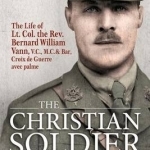
The Christian Soldier: The Life of Lt. Col. Bernard William Vann, V.C., M.C. and Bar, Croix De Guerre Avec Palmes
Book
Lieutenant Colonel the Rev Bernard William Vann, VC, MC & Bar, Croix de Guerre avec palme, was one...
Alice (12 KP) rated The Aeronaut's Windlass in Books
Jul 3, 2018
5 Stars - fabulously steampunk novel set high in the sky
The Aeronaut’s Windlass has been something I’ve had for a few months but I’ve been putting it off and putting it off as I didn’t like the authors other first book Storm Front, book 1 of the The Dresden Files. My fiancé has been telling me to read it over and over again and I’ve always put it off after a bad start to Dresden, however, a Facebook group I’m part of told me to read it and gave me several reasons why.
First and foremost, The Aeronaut’s Windlass is steampunk!
Secondly, cats. Talking cats.
And finally there’s aeronauts.
The book opens in what, at first glance, appears to be a regency novel – cue derision and disbelief – until one of the main characters Gwen Lancaster threatens a warrior born with an etheric gauntlet.
Ether is something that is mentioned often in this book and during the various trips of the main characters, it is shown in various forms.
Our main characters revolve around the following:
Gwen Lancaster – heir to the Lancaster fortune and crystal factory. Guard in the Spirearch’s Guard.
Benedict Sorellion-Lancaster – warrior born guard in the Spirearch’s Guard.
Bridget Tagwynn – cat girl and only child of the head of the Tagwynn family.
Captain Francis Madison Grimm – disgraced Fleet officer and captain of the merchant class ship AMS Predator an aeronautical ship.
Rowl – kit to Maul of the Silent Paws.
The premise of The Aeronaut’s Windlass is the aeronautical prowess of the Spires, a tall building that towers above the surface of Earth, designed in a general diamond shape with the key head houses at each compass point and the Spirearch smack in the middle. The Spires in focus are Spire Albion and Spire Aurora; a rival Spire with a penchant for warmongering. The book follows Gwen and Bridget as they train to become members of the Spirearch’s Guard, with Benedict – Gwen’s cousin – doing some extra training on the side. There’s an accidental duel and it’s from here that our story really starts; there’s an explosion and the Spire starts to collapse around them. Our intrepid heroes work together to save a fellow trainee and end up on the wrong end of a potentially deadly situation and the war starts.
The rest of the book is wonderfully described and there’s plenty of sky time for the pilot-at-heart in us all. There’s talking cats that are so well written you can plainly imagine your pet cat having that much disdain for you but really loving you with his whole heart; Rowl, in particular gives off the standard cat disdain but he’s also amazingly human in an odd way. There’s a few odd main secondary characters – Master Ferus and Folly – both of whom are integral to the story as a whole and both of whom are etheralists and a little odd.
There’s war, battles in the sky and dire situations, there’s treachery secrets and death galore; and there’s a history between a lot of the characters to make your eyebrows raise and your brain twitch in disbelief.
As originally stated I was quite reluctant to read Windlass but I really enjoyed the storyline as a whole, the characters were amazingly human/humanised – even the ones who aren’t – Bridget was my favourite, she was so unbelievably awkward in everything that she did but she was so sweetly written that she was entirely relatable.
I see sometimes that steampunk novels are written with the wrong tone of voice – when you hear steampunk you think Victorian and I’ve read sometime books classified as steampunk that weren’t in any way. Windlass didn’t have this issue and it was written perfectly for the genre.
Brilliantly done and I look forward to the sequel <i>The Olympian Affair.</i>
The Aeronaut’s Windlass has been something I’ve had for a few months but I’ve been putting it off and putting it off as I didn’t like the authors other first book Storm Front, book 1 of the The Dresden Files. My fiancé has been telling me to read it over and over again and I’ve always put it off after a bad start to Dresden, however, a Facebook group I’m part of told me to read it and gave me several reasons why.
First and foremost, The Aeronaut’s Windlass is steampunk!
Secondly, cats. Talking cats.
And finally there’s aeronauts.
The book opens in what, at first glance, appears to be a regency novel – cue derision and disbelief – until one of the main characters Gwen Lancaster threatens a warrior born with an etheric gauntlet.
Ether is something that is mentioned often in this book and during the various trips of the main characters, it is shown in various forms.
Our main characters revolve around the following:
Gwen Lancaster – heir to the Lancaster fortune and crystal factory. Guard in the Spirearch’s Guard.
Benedict Sorellion-Lancaster – warrior born guard in the Spirearch’s Guard.
Bridget Tagwynn – cat girl and only child of the head of the Tagwynn family.
Captain Francis Madison Grimm – disgraced Fleet officer and captain of the merchant class ship AMS Predator an aeronautical ship.
Rowl – kit to Maul of the Silent Paws.
The premise of The Aeronaut’s Windlass is the aeronautical prowess of the Spires, a tall building that towers above the surface of Earth, designed in a general diamond shape with the key head houses at each compass point and the Spirearch smack in the middle. The Spires in focus are Spire Albion and Spire Aurora; a rival Spire with a penchant for warmongering. The book follows Gwen and Bridget as they train to become members of the Spirearch’s Guard, with Benedict – Gwen’s cousin – doing some extra training on the side. There’s an accidental duel and it’s from here that our story really starts; there’s an explosion and the Spire starts to collapse around them. Our intrepid heroes work together to save a fellow trainee and end up on the wrong end of a potentially deadly situation and the war starts.
The rest of the book is wonderfully described and there’s plenty of sky time for the pilot-at-heart in us all. There’s talking cats that are so well written you can plainly imagine your pet cat having that much disdain for you but really loving you with his whole heart; Rowl, in particular gives off the standard cat disdain but he’s also amazingly human in an odd way. There’s a few odd main secondary characters – Master Ferus and Folly – both of whom are integral to the story as a whole and both of whom are etheralists and a little odd.
There’s war, battles in the sky and dire situations, there’s treachery secrets and death galore; and there’s a history between a lot of the characters to make your eyebrows raise and your brain twitch in disbelief.
As originally stated I was quite reluctant to read Windlass but I really enjoyed the storyline as a whole, the characters were amazingly human/humanised – even the ones who aren’t – Bridget was my favourite, she was so unbelievably awkward in everything that she did but she was so sweetly written that she was entirely relatable.
I see sometimes that steampunk novels are written with the wrong tone of voice – when you hear steampunk you think Victorian and I’ve read sometime books classified as steampunk that weren’t in any way. Windlass didn’t have this issue and it was written perfectly for the genre.
Brilliantly done and I look forward to the sequel <i>The Olympian Affair.</i>
